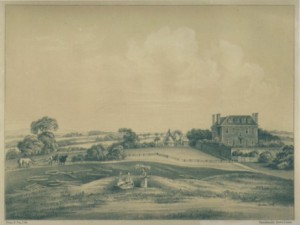 The rear, western part of the building was built in 1688 for Samuel and Anne Watlington, whilst the eastern part, fronting onto Watlington Street, is said to date from 1763. Samuel Watlington served as mayor of Reading in 1695 and again in 1711.
The rear, western part of the building was built in 1688 for Samuel and Anne Watlington, whilst the eastern part, fronting onto Watlington Street, is said to date from 1763. Samuel Watlington served as mayor of Reading in 1695 and again in 1711.
The first recorded occupant of the house was Captain Edward Purvis in 1794, renting the house for £25 annually. He fought at the Battle of Corunna in the Peninsular War with the 4th Regiment of Foot and trained the Berkshire Militia in Orts meadow near his home. The house is rumoured to be haunted by his ghost. There have been many recorded incidents, some which are genuine others remain unexplained and we certainly have plenty of stories to tell along with people who have witnessed events.
http://www.bbc.co.uk/berkshire/features/2003/06/ghosttour_reading.shtml
After Captain Purvis, the house was variously occupied by a Mrs Stevens and then used as an office by the town clerk of Reading.
In 1877 the house became the first home of the newly founded Kendrick Girls School. The school remained on the site until 1927, when they moved to their current location on the corner of Sidmouth Street and London Road. During their stay they erected a corrugated iron hall in the garden, which still stands.
The house has been used by the local WI’s and from the photographs shown Watlington House was clearly very popul ar.
ar.
http://www.bbc.co.uk/berkshire/features/2003/06/ghosttour_reading.shtml
Since 1931, the building has been owned by local trustees. They provide accommodation for social and educational organisations, using the rents for the upkeep of Watlington House.
A Piece of Reading Abbey
 Many houses in Reading retain flint in the building walls which is believed to come from Reading Abbey and their is clear evidence of this within the Walls for Watlington House. We know that Robert Watlington was commissioned to clear the remains from Reading Abbey, the remaining items mostly being timber & flint. In the oldest part of Watlington House an ancient Stone Plinth has been set in the wall in the area once used by TOC Chapel, this Stone Plinth was found on the premises whilst restoration work was completed, whether taken by Robert Watlington we cannot be certain, we do however know this to be from Reading Abbey and so this make the Plinth an important piece of skilled stone work.
Many houses in Reading retain flint in the building walls which is believed to come from Reading Abbey and their is clear evidence of this within the Walls for Watlington House. We know that Robert Watlington was commissioned to clear the remains from Reading Abbey, the remaining items mostly being timber & flint. In the oldest part of Watlington House an ancient Stone Plinth has been set in the wall in the area once used by TOC Chapel, this Stone Plinth was found on the premises whilst restoration work was completed, whether taken by Robert Watlington we cannot be certain, we do however know this to be from Reading Abbey and so this make the Plinth an important piece of skilled stone work.
The first Kendrick School
In 1877, Watlington House changed from being a family home to that of Kendrick School. This was to last for 50 years until the decision to leave this wonderful building was finally made and Kendrick moved into their new premises. Some old features from when Kendrick occupied the premises still exist; the outside toilets and Hall are the two most obvious. Drawings and notes taken from the pupils’ diaries help to give an idea of how Watlington House once played host to the range of lively activities that took place in the grounds.
The stone plinth above the front door has since been removed and can now been seen in the outer wall for the current Kendrick School, on Sidmouth Street.



